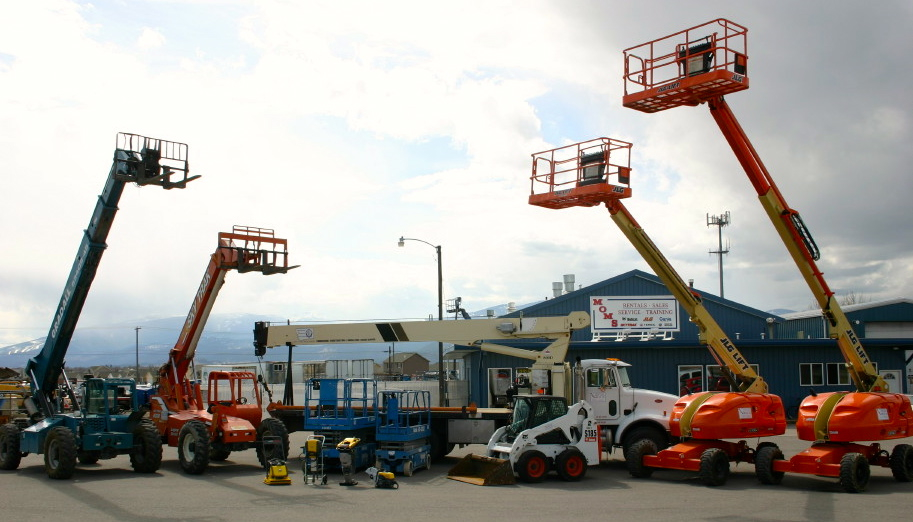Forklift Rental: Heavy Lifting Equipment for Warehousing and A lot more
Forklift Rental: Heavy Lifting Equipment for Warehousing and A lot more
Blog Article
Optimize Your Budget Plan by Comprehending the Expenses Related To Construction Equipment Services
Understanding the full extent of costs linked with construction devices leasings is critical for optimizing your budget plan. What methods can be utilized to successfully manage these costs and make sure an extra efficient rental experience?
Overview of Rental Expenses
When taking into consideration building and construction equipment leasings, comprehending the linked prices is extremely important for reliable budgeting and job preparation. Rental costs can differ substantially based on several factors, consisting of tools kind, duration of rental, and place. The initial rental charge commonly shows the tools's market demand and its linked operational abilities, influencing the general cost.
Along with the base rental rate, supplementary expenses might occur, such as transportation fees, gas additional charges, and upkeep fees. It is vital to represent these extra expenses to accurately examine the complete cost of leasing equipment. The rental period can affect rates; longer leasings might certify for reduced rates, while short-term services could sustain higher day-to-day charges.

Failure of Rental Prices
An extensive understanding of rental prices is essential for service providers and task supervisors intending to optimize their budgets. Rental rates for building equipment usually include a number of components, consisting of base rates, time-based charges, and usage costs.
Base rates are the core charges related to the service of the tools, usually determined by the type and size of the equipment. These prices can differ considerably, affected by factors such as equipment demand, schedule, and regional market trends. Time-based fees, which might be daily, weekly, or monthly, offer to accommodate various job timelines and rental durations.
Furthermore, rental rates might include usage fees, which are appropriate when equipment is made use of beyond a specified threshold, guaranteeing that the rental company can represent wear and tear. Seasonal demand changes can also influence rental rates, with peak construction seasons normally regulating greater rates.
In addition, recognizing the rental company's policies concerning maintenance and insurance can offer more understanding right into the overall price framework. By analyzing these components, specialists can make enlightened choices, making sure the selection of rental equipment aligns with both project needs and spending plan constraints.
Extra Fees to Take Into Consideration
Comprehending the complexities of added fees is important for contractors to handle their overall service expenses effectively. Beyond the conventional rental rates, numerous auxiliary charges can substantially influence the complete price of devices rental. These fees usually include shipment and pick-up fees, which can vary based upon range and logistics included in transporting the tools to and from the work site.
In addition, some rental business might enforce gas additional charges if the tools is returned with less gas than when leased. It is likewise vital to be mindful of potential cleansing costs, particularly for customized equipment that calls for extensive maintenance after usage.

Thoroughly reviewing the rental contract and clarifying these extra fees in advance can assist specialists prevent try this web-site unforeseen expenses and make certain that spending plans remain intact throughout the project lifecycle.
Repair And Maintenance Expenditures
Routine repair and maintenance costs are frequently ignored aspects that can dramatically affect the total price of building and construction tools rentals. When renting out equipment, it is essential to think about not only the rental costs but also the possible costs associated construction lifts for rent with keeping the machinery in ideal operating condition.
Lots of rental business consist of standard upkeep as part of the rental contract; however, extra extensive repairs or unforeseen failures can lead to added expenses. It's crucial to examine the rental agreement meticulously to comprehend what maintenance solutions are covered and what obligations fall on the tenant.
Additionally, devices that is not properly maintained can result in inadequacies on the task website, potentially increasing and creating delays task expenses. To reduce these risks, it is suggested to conduct regular inspections and maintain open communication with the rental service provider concerning any concerns that arise throughout use.
Insurance and Responsibility Costs
Insurance policy and obligation expenses are critical components that can substantially affect the general cost of building equipment services (rental company near me). These costs make certain that both the rental firm and the customer are shielded from prospective monetary losses arising from accidents, damages, or burglary during the rental period

In addition, customers need to know any kind of deductibles or exclusions in pop over to this site the insurance plan, as these can affect prospective out-of-pocket expenses. Recognizing the terms of any kind of insurance policy coverage is vital to avoid unforeseen expenses. Ultimately, budgeting for insurance coverage and liability expenditures can help make sure a smoother rental experience and protect against monetary dangers associated with building and construction projects.
Final Thought
In verdict, a thorough understanding of the prices linked with building equipment rentals is crucial for efficient budget plan management. Eventually, informed decision-making regarding devices leasings adds to the overall success of building undertakings.
Rental expenses can vary considerably based on several elements, including devices kind, duration of service, and place (mini excavator rental). The rental period can affect pricing; longer leasings might qualify for discounted prices, while temporary rentals could sustain greater everyday fees
By carrying out complete study and engaging with trusted rental business, professionals can effectively navigate the intricacies of rental prices, eventually maximizing their monetary sources.
Beyond the conventional rental rates, different auxiliary charges can considerably affect the total expense of tools rental. Rental firms commonly supply obligation insurance policy that covers injuries to 3rd events or damage to residential or commercial property, while equipment damage insurance can cover the price of repairs or substitute if the rented tools is damaged.
Report this page